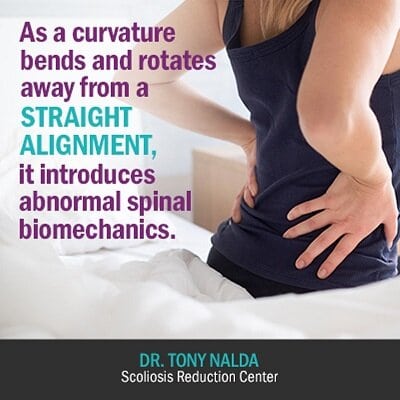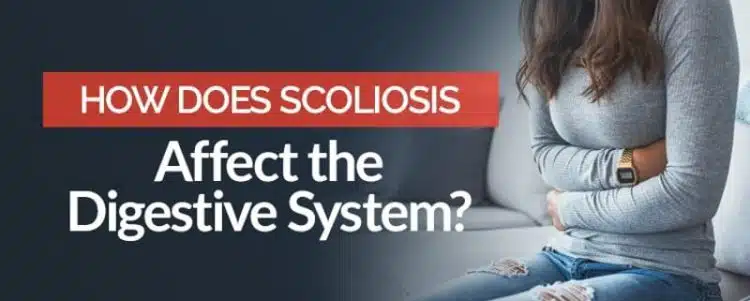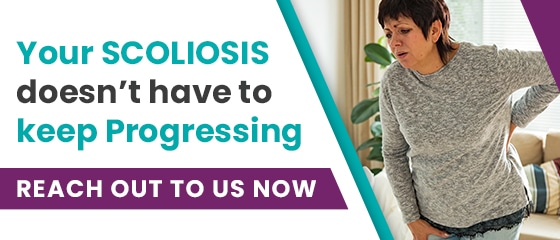The spinal cord is a vital part of human anatomy that’s connected to virtually every system within the body. Its primary function is to relay messages to and from the brain, coordinate reflexes, and provide the body with structural support. When a person’s spinal cord is compromised due to scoliosis, its ability to carry messages from the brain to the rest of the body can be impaired, affecting muscles and organs essential to digestion.
The Role of the Spinal Cord
The spinal cord works in tandem with the brain. To better understand this, you can picture the spinal cord as a telephone operator that facilitates connections and communication throughout the body.
Relaying Messages
The spinal cord helps the brain talk to various parts of the body and helps those parts communicate with the spinal cord. The spine relays messages from the brain to different muscles in the body to facilitate movement.
Sensory receptors are found throughout the body and have many important roles. These receptors help the body’s senses to function. The eye’s rod-and-cone photoreceptors help them adjust to color and light intensity. Olfactory receptors react to molecular features of smells, and with touch, the skin’s mechanoreceptors react to changes in pressure.
The spinal cord passes along messages from sensory receptors to the brain which sends response messages back to the relevant areas of the body.
Coordinating Reflexes
The spinal cord also has the important task of responding to outside stimuli by coordinating reflexes that aren’t routed through the brain; the spinal cord alone manages these reflex responses.
Structural Support
In addition to the spine’s telephone-operator role of relaying important messages back and forth between the brain, spinal cord, and the rest of the body, the spine acts as the body’s main support structure. It keeps bodies upright and straight and connects the skeleton’s various parts to one another, such as the head, chest, pelvis, shoulders, arms, and legs.
How the Spine Changes with Scoliosis

When a person develops scoliosis, their spine is undergoing a progressive structural change in the form of an abnormal spinal curvature. When it comes to scoliosis, there are a lot of uneven forces at work.
As a curvature bends and rotates away from a straight alignment, it introduces abnormal spinal biomechanics.
There are a total of five healthy curves to the spinal cord, and these curves give the spine its strength and flexibility.
While scoliosis is most commonly found in the spine’s middle and lower portion, it can develop at different points along the spine: cervical, thoracic, lumbar, sacral and coccyx.
- Cervical region refers to the upper portion of the spine that connects to the head, neck, upper body, arms, and hands.
- Thoracic region: refers to the spine’s mid-section that connects to the hands, fingers, chest, and abdominal muscles.
- Lumbar region: refers to the spine’s lower portion that connects to the hips, knees, ankles, and muscles of the toes.
- Sacral region: refers to the bottom portion of the spine that connects to the legs, toes, bladder, and anal muscles.
- Coccygeal region: more commonly known as the tailbone, the region is an attachment site for ligaments, tendons, and muscles.
Keeping in mind how each region of the spinal cord connects to multiple other areas and parts of the body, you can see how a deformity of the spine can be felt in areas outside of the spine.
Abnormal Spinal Biomechanics
When an abnormal spinal curvature is introduced, abnormal spinal biomechanics develops. As the spine loses its good curves, the body attempts to compensate by introducing bad curves.
Curves from the side are referred to as sagittal; curves from the front are referred to as coronal. As the body loses its sagittal curves, it’s going to introduce coronal curves, and these abnormal curvatures are known as scoliosis.
When there are unequal forces at work on the spinal cord, the body naturally twists and turns to restabilize itself; this tendency can affect multiple systems within the body and not just the spine and its adjacent muscles.
The Digestive System

The digestive system refers to a group of organs that work together to convert whole foods into energy and nutrients that nourish the body; this allows it to function, grow, and repair itself as needed. The long tube in the body through which food passes is called the gastrointestinal tract (GI tract).
In order for the body to benefit from the energy and nutrients provided by the food that enters it, there are six main functions of the digestive system:
- Ingestion – the intake of food
- Secretion – the release of fluids and digestive enzymes such as saliva, mucus, acids, and bile
- Mixing and movement – the process of swallowing, peristalsis, and segmentation
- Digestion – breaking down large chunks of food into its chemical components
- Absorption – absorbing the building blocks that the food has been reduced to
- Excretion – eliminating waste from the body through defecation
Scoliosis and the Digestive System
As the digestive system is made up of a group of organs that facilitate the body’s ability to use the essential nutrients and energy that food provides, any condition affecting these organs can impair digestion and bowel function.
While it might initially seem like a stretch to say that a spinal deformity can affect the digestive system, if you think back to that analogy of the spine acting as a telephone operator relaying messages throughout the body, the connection becomes clearer.
The spinal cord carries messages from the brain to the body’s peripheral nerves; these nerves control muscles and internal organs, some of which play important roles in digestion.
If a spine is abnormally curved, that path of communication becomes skewed and can impair the flow of information between the brain and the body’s muscles and organs.
Postural changes, such as a prominent lean to one side, that can occur with moderate-to-severe scoliosis can also cause compression and contortion of the muscles, stomach, and organs.
Are you experiencing diegstive issues or other scoliosis symptoms? Click here to contact us to learn more about our conservative approach to scoliosis treatment.
Digestive Issues Associated with a Spinal Misalignment
If scoliosis is left untreated and allowed to progress unimpeded, scoliosis patients can experience the following symptoms:
- Irritable bowel syndrome (IBS)
- Stomach pains and cramping
- Acid reflux
- Heartburn
- Constipation
Scoliosis is a complex condition that takes many forms and varies from mild to severe. Its symptoms will differ depending upon a number of variables including age, cause, degree of curvature, and its location along the spine.
The spine acts as a highway for the body’s central nervous system, so any condition that affects the spine has the potential to affect other parts of the body, including the pancreas, kidneys, bladder, and intestines.
If the body is leaning unnaturally to one side, as it can with scoliosis, the resultant contortion and compression can also impair the body’s ability to digest food normally. Depending on the location and degree of the spinal curvature, the passage of food through the intestines can become blocked, causing constipation.
Conclusion
Every case of scoliosis is different, and in my years of treating patients and their condition here at the Scoliosis Reduction Center®, I’ve never repeated a treatment plan. Just as every case is different, the symptoms a patient is likely to experience can also differ greatly.
As the spine’s healthy curves facilitate its strength and flexibility, losing those good curves can result in the body responding by introducing bad curves. As the spine is the primary means by which the brain communicates with the rest of the body and the rest of the body communicates with the brain, spinal disorders can cause a whole host of unexpected symptoms and issues, including impairing the digestive tract and bowel function.
As the means by which the body turns food into essential nutrients and energy, the digestive system plays a leading role in the body’s overall functionality. The postural changes that can occur in scoliosis can cause the body to have an unnatural lean to one side, and this can result in the contortion of muscles, the stomach, and organs involved in digestion.
Spinal curvatures can also impair the body’s ability to relay messages from the brain to peripheral nerves throughout the body via the spinal cord. The peripheral nerves control muscles and organs, so you can see how this can affect the digestive system in multiple ways. Additional digestive issues that can be caused by scoliosis are acid reflux, heartburn, stomach pains, constipation, and IBS.
The best approach to handling scoliosis-related symptoms, such as digestive issues, is to manage the condition’s progression through a proactive scoliosis-specific chiropractic approach. Here at the Scoliosis Reduction Center®, our approach has proven results. Click here to contact us and to learn more about our proactive and conservative approach to scoliosis treatment.






